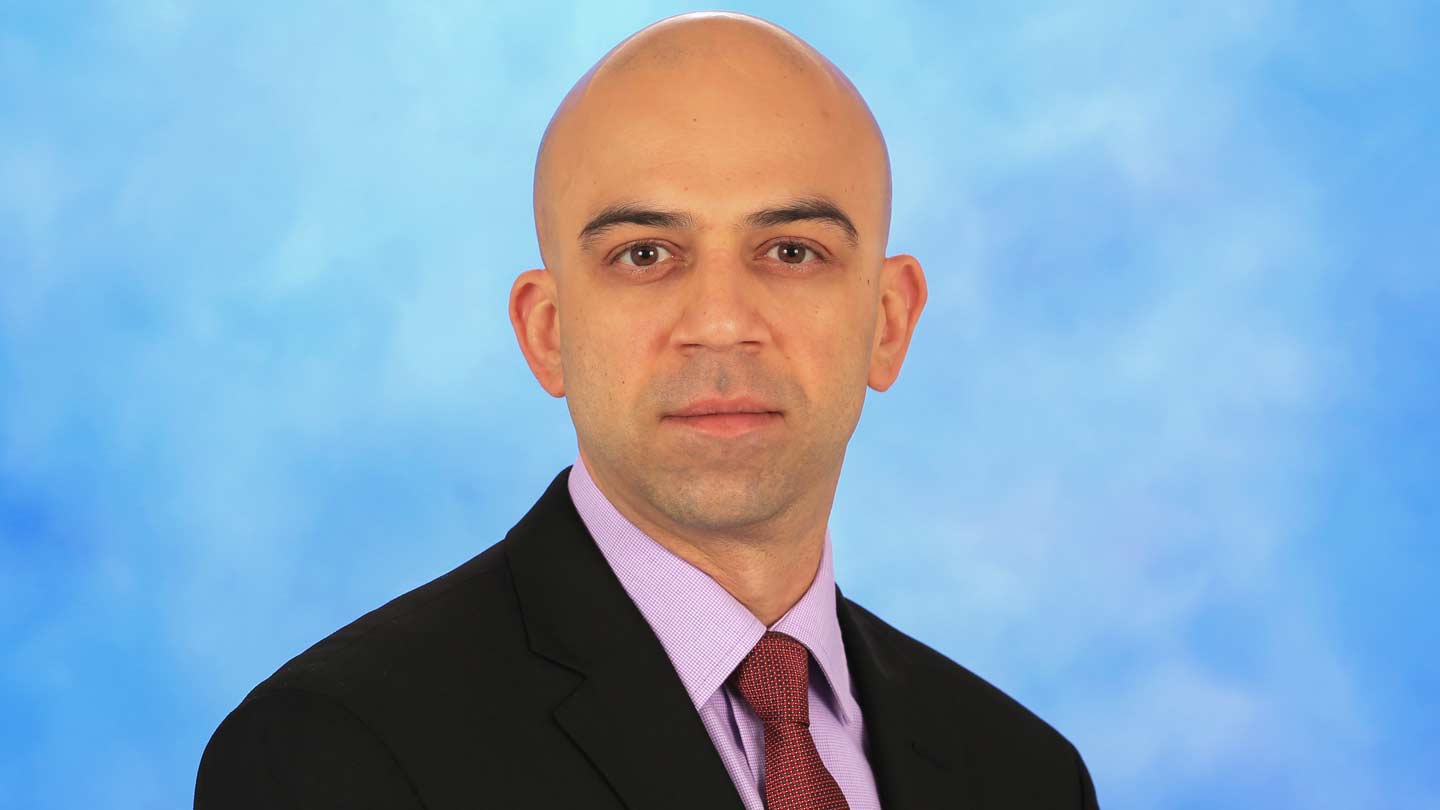
Dr. Tathagata Mukherjee, an assistant professor of computer science, is the lead class instructor for Hacking For Defense (H4D) with Network Security.
Michael Mercier | UAH
The University of Alabama in Huntsville (UAH) will be the first in the state to offer the Hacking for Defense (H4D) cybersecurity class beginning in spring semester 2020.
The H4D initiative at UAH is led by the Invention to Innovation Center (I2C) and Department of Computer Science.
"The I2C presents opportunities for out of the box thinking and H4D allows our faculty and student body to experience just that. H4D is an immersive program designed by the best minds in entrepreneurship and education. We are glad to play a pivotal role in bringing it to campus. Through H4D students will have the ability to work on "real-world" problem sets defined by various Dept. of Defense agencies and apply the curriculum to provide insights and solutions to respective stakeholders. This is hands-on learning at its best," says Rigved Joshi, director at the I2C.
H4D is a program of the National Security Innovation Network (NSIN) that’s powered by Palo Alto, Calif., company BMNT Inc. and the Common Mission Project. H4D is sponsored by the U.S. Dept. of Defense. It teaches students to work with the defense and intelligence communities to rapidly address the nation’s emerging threats and security challenges.
"I can confirm that UAH is the first school in Alabama to run the course," says Max Weintraub, program manager at NSIN.
"Offering this course puts UAH among some of the biggest schools in the country that have partnered with NSIN," says lead class instructor Dr. Tathagata Mukherjee, an assistant professor of Computer Science.
Weintraub says the class is different because every problem that is assigned to a student team across the country is unique and was sourced by NSIN directly from the Dept. of Defense.
"The original curriculum was created at Stanford University and expanded upon with NSIN's support in conjunction with our partners at the Common Mission Project," Weintraub says. "As a Dept. of Defense Program Office under the Undersecretary of Research and Engineering, we see value in creating opportunities for innovators at top universities like UAH to try to solve emergent national security problems."
Dr. Mukherjee says he hopes students come to realize and appreciate the difficulties that are being faced by the U.S. when it comes to cyber warfare.
"The world is moving forward and new adversaries are being born every day, and threats to national security are ever changing in nature," he says. "There is a need to understand the challenges and appreciate them on one end and to be able to solve these challenges on the other.
"Cyber security is one of the major threat areas, as is shown by the existence of the cyber command, and there is a need for qualified people to serve in this domain and apply their minds to the challenges that are at the forefront of national security in the cyber domain."
Weintraub says the course title alone creates a striking line item on a student's resume.

The Invention to Innovation Center played a pivotal role in bringing H4D to campus, says Rigved Joshi, I2C director.
Michael Mercier | UAH
"For students who are interested in pursuing careers related to defense many technology companies, large defense contractors and even Dept. of Defense organizations actively recruit H4D alumni," Weintraub says. "Additionally, NSIN has an entire National Service Portfolio dedicated to helping students gain access to internship and career opportunities within the Department of Defense."
Solving actual security problems that are being tackled by the Dept. of Defense’s organizations will provide immense exposure to real-world situations for students, Dr. Mukherjee says.
"This is a once in a lifetime chance, and if done correctly, they will have made themselves more employable at the end of the course," says Dr. Mukherjee. "It has the potential to help them better understand the problems facing the country when it comes to national security and to develop a spirit to serve by becoming a part of these organizations after they graduate."
Students will form five-member teams and be assigned a problem and a mentor from a Dept. of Defense agency. They will learn how to understand the problem and use proper techniques to document their understanding.
In the course of understanding the problem, students will interview and talk with the involved Dept. of Defense personnel who are stakeholders. On average, each team will interview 70-80 people in a semester.
"Based on their understanding, the students will develop an initial solution called a Minimum Viable Product (MVP) which will be the main deliverable of the project at the end of the semester," says Dr. Mukherjee.
"The problems will be tailored to the class and I am in the process of choosing the problems. Right now, we have problems from one Dept. of Defense sponsor, namely the Missile Defense Agency (MDA). We will also get problems from Army Futures command and other related agencies."
Business development cycle concepts incorporated in the H4D class will be supported by Rigved Joshi, director of the I2C along with other mentors from I2C’s Mentor.Live program.
"He has been a constant help and encouragement throughout the process of setting up the course," says Dr. Mukherjee. "He has kindly agreed to cover a few lectures and educate the students on the need to document every step in the problem understanding and solving steps. He will also be the main UAH mentor apart from myself."
"We are excited to bring our mentors to work with students on H4D. This is a big commitment for everyone involved and it’s going to be all hands on deck from the get-go to ensure we successfully execute the program," says Rigved Joshi, director of the I2C.
Set to be offered as Hacking For Defense (H4D) with Network Security CS 465/565, H4D is for students who meet the course requirements as detailed by the UAH course catalog and who can dedicate the time required to succeed, Dr. Mukherjee says.
"Given that this course will involve a lot of work, I would not encourage students having more than 15 hours of load to take the class."